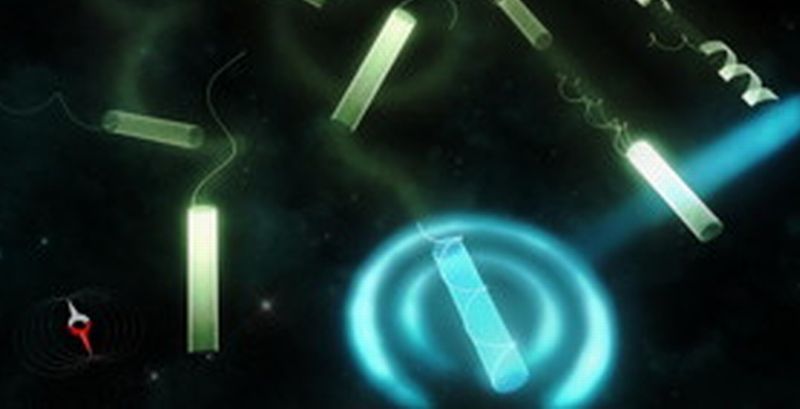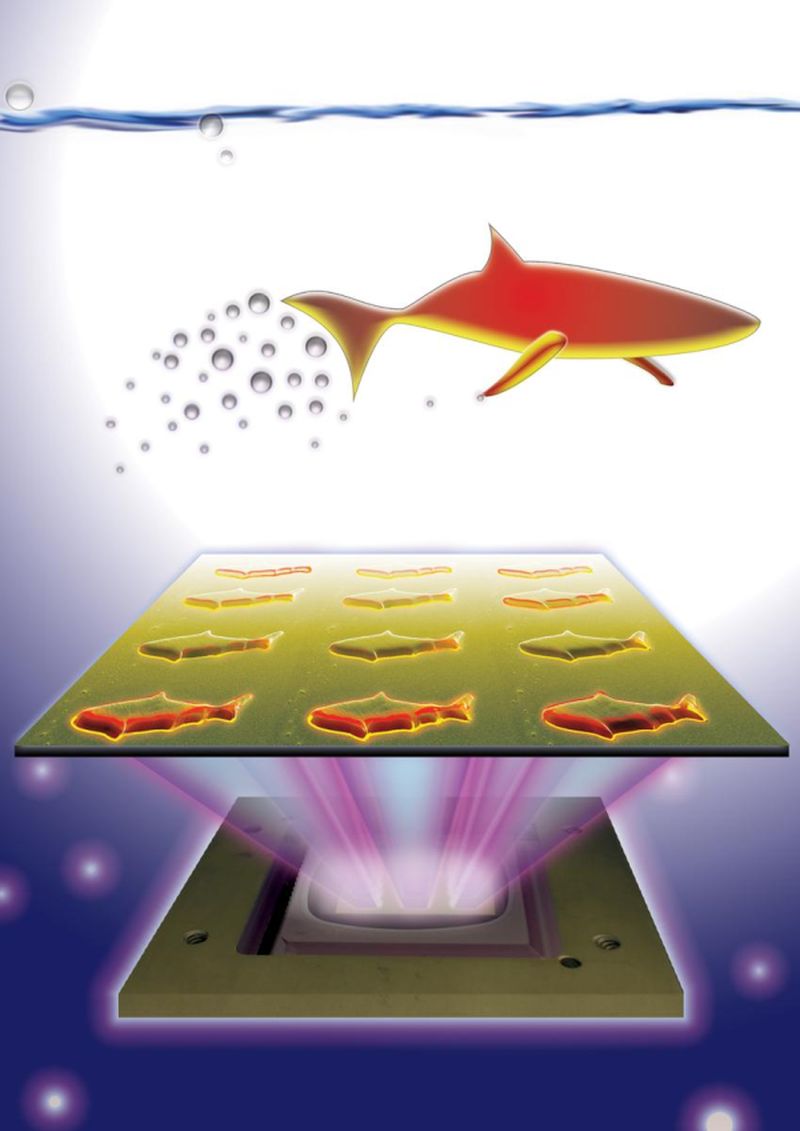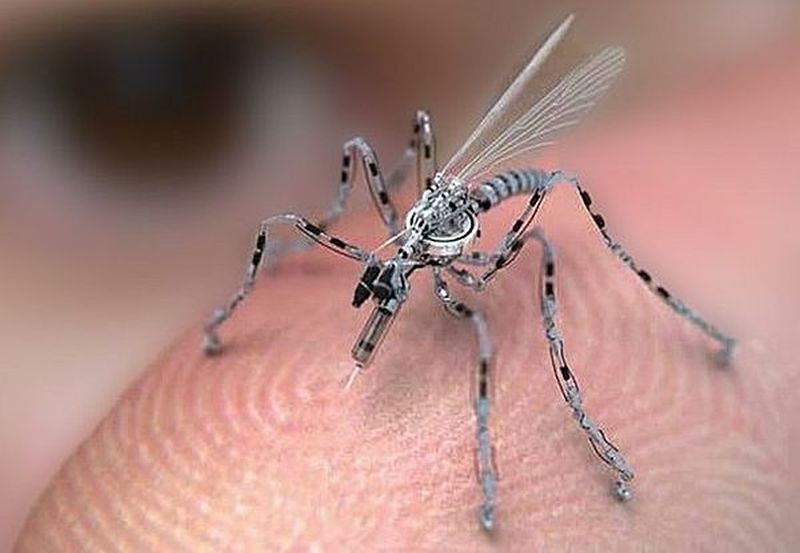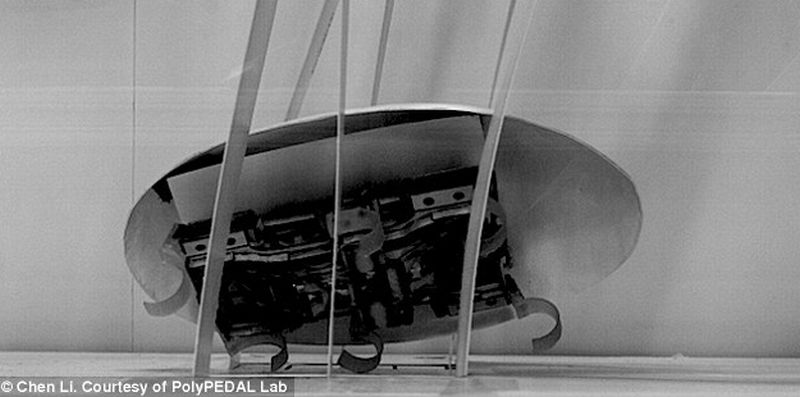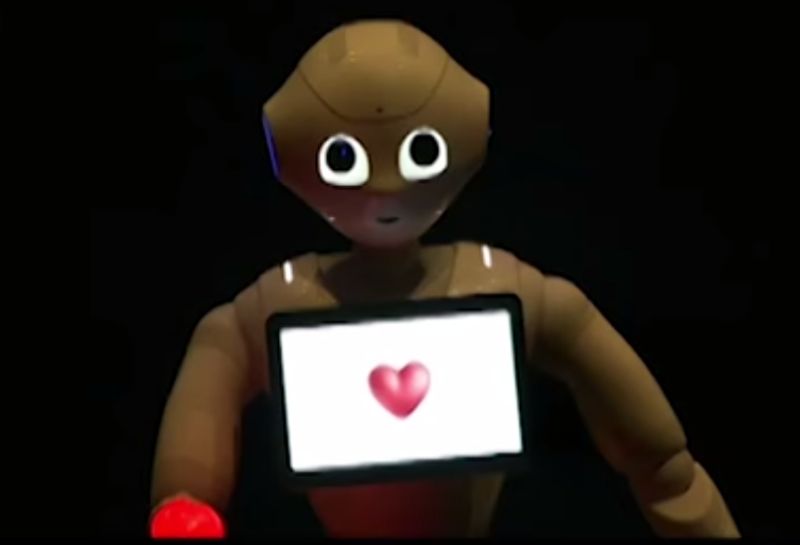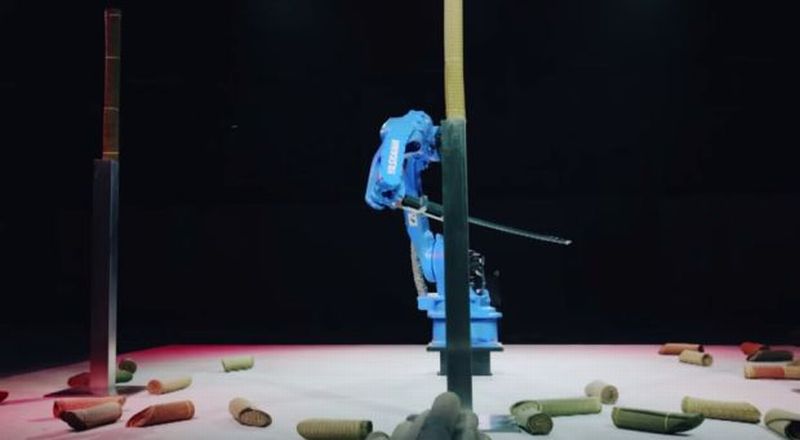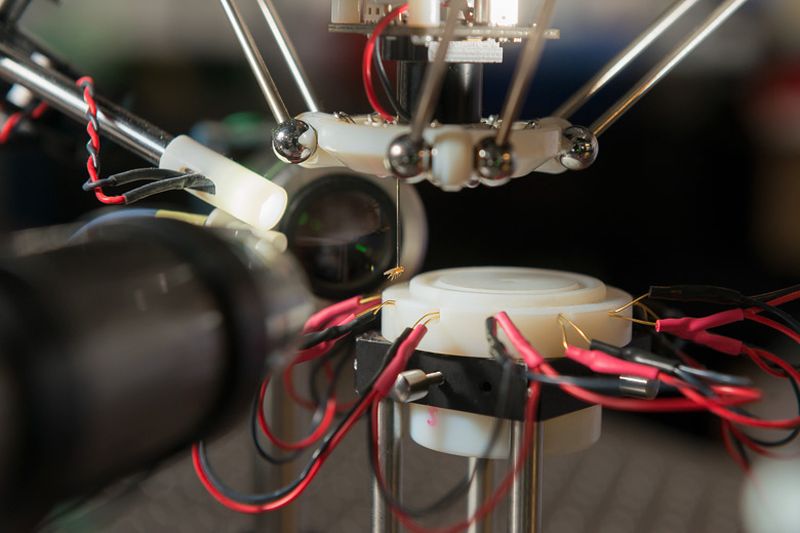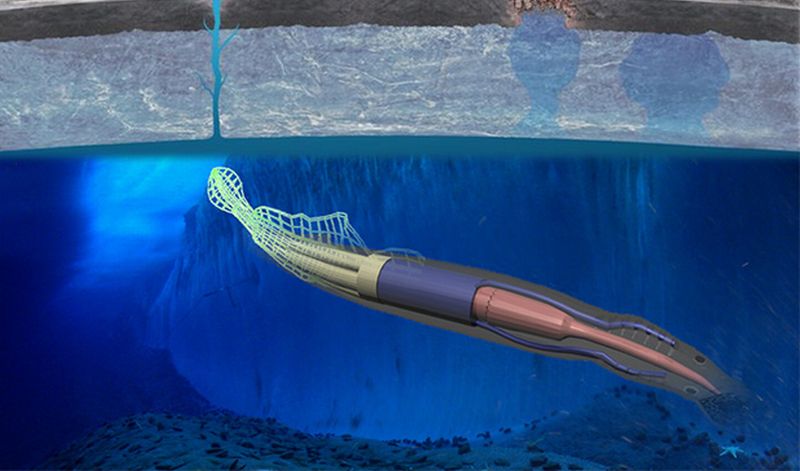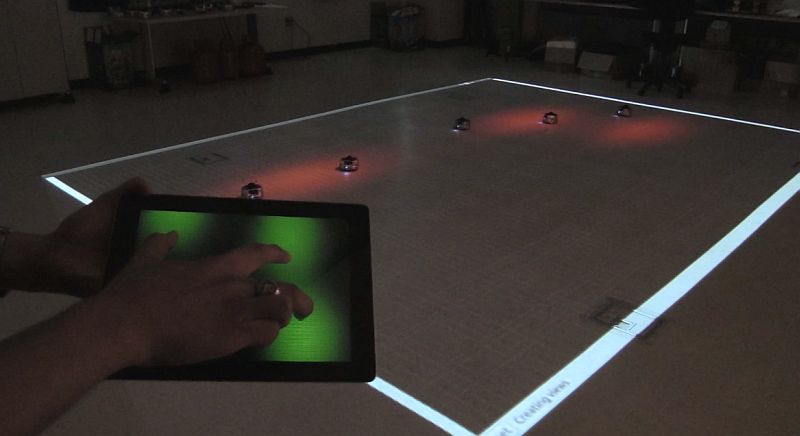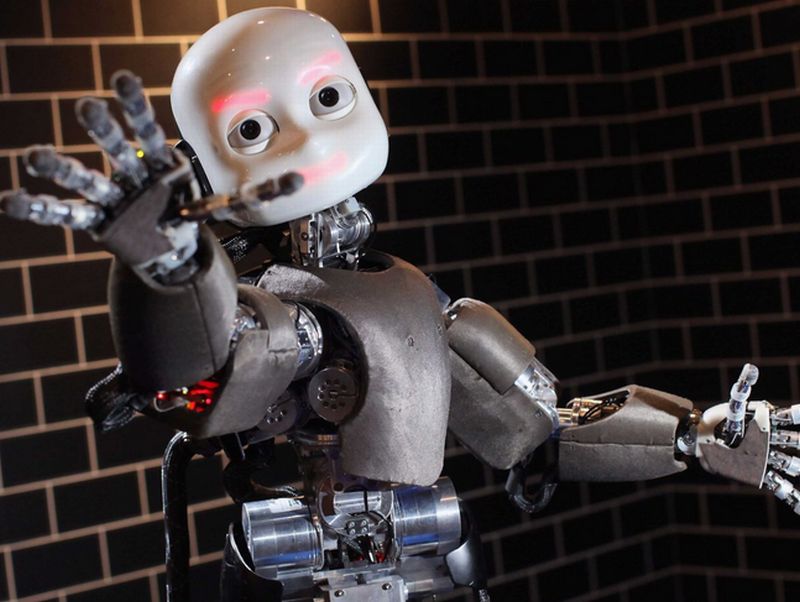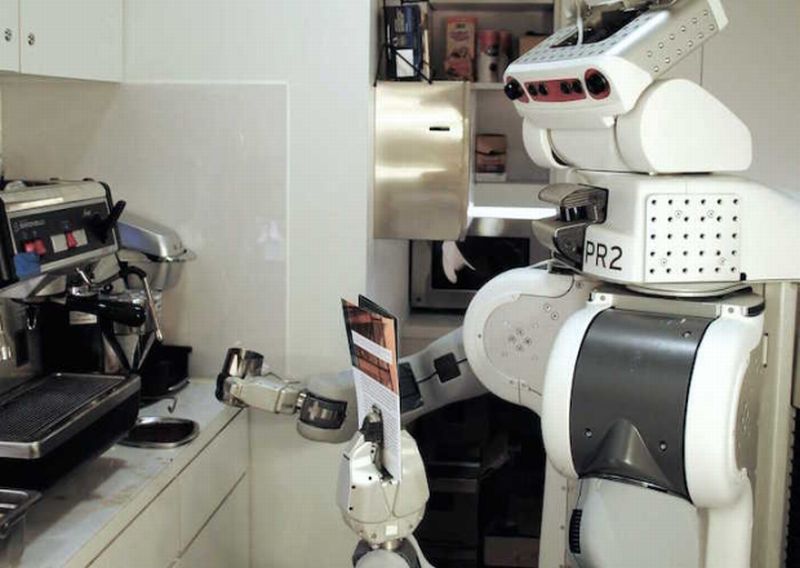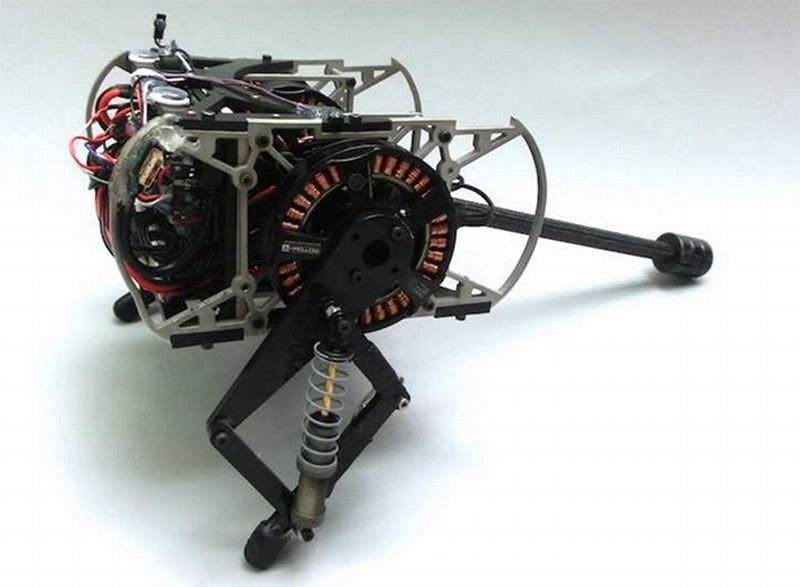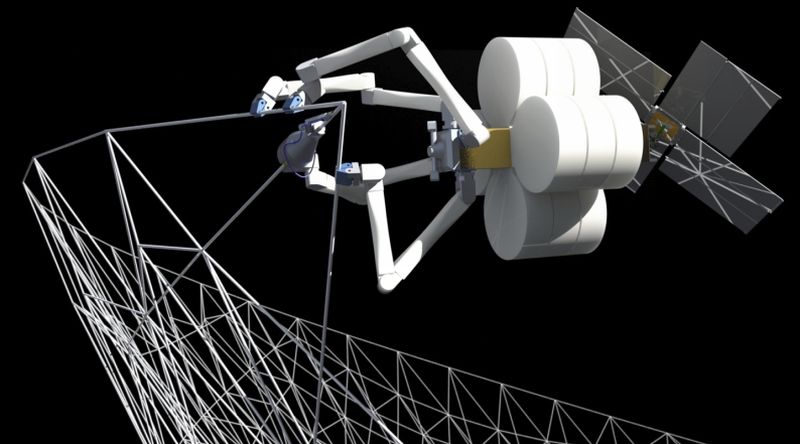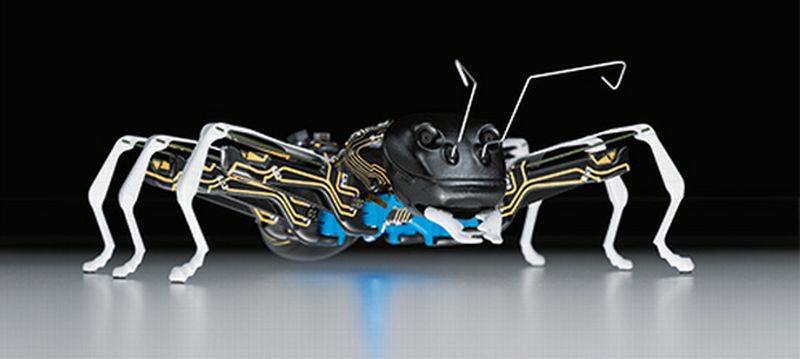Researchers a Swiss Federal Institute of Technology, Lausanne have developed a technique that can be used for both, fabricating bio-inspired robots and secondly, furnishing them with higher configurations. Their newly constructed platform also helps in examining and researching robot designs along with their various modes of locomotion. Result of their platform is the production of complex yet reconfigurable microrobots – the nanobots can change their own shape by rearranging the connectivity of their parts- with high throughput.
Read MoreTag: robotics
Micro fish to sense toxins & deliver drugs: 3D printed Nanobots
Nanoengineering experts at the University of California, San Diego, using advanced 3D printed technology have designed micro robots, named as micro fish. As the name suggests these tiny robots are fish shaped and can be used for various functions such as detoxification, sensing toxins and in surgeries assisted by micro robots.
Read MoreTiny Insect Eye Motion Sensor: Giving Sight to Mini Drones
Based on the vision systems of insects, researchers have created petite artificial eye for autonomous flying drones. This would make drones more practical by helping in smooth navigation, avoiding collision in restricted or cluttered areas.
Read MoreCockroach Robot: Uses Body Shape for traversing Cluttered Environment (w/ Video)
Researchers at University of California, Berkeley have designed a robot that is based on cockroach. Team envisions that the concept would inspire future robot designs so that the body shape might be used for tracking environment including exploration and rescue operations.
Read MorePepper Robot for Sale: World’s First Personal Bot the Reads Emotions
Softbank’s Pepper robot will be hitting stores by 20th of June that is coming Saturday. The robot is furnished with heart like designed that not only helps in identifying human emotions but reacting with simulations of anger, joy and irritation.
Read MoreMotoman MH24 competes with Isao Machii: Industrial Robot versus Sword Master (w/ Video)
Yaskawa Electric Corporation has unleashed Motoman MH24, a 6-axis high-speed robot that shows impeccable range of applications in handling and machine tending. In Yaskawa challenge, the bot competed with Isao Machii, the world-famous sword master and displayed its kills around bamboo poles.
Read MoreOrigami Robot: Fold, Walks, Swim and Degrades Autonomously
Researchers from CS & AI at MIT in collaboration with Technische Universitat, Germany have created a self-folding bot based on Japanese concept of folding paper into decorative shapes and figures called origami. The tiny bot fold, walks, swim and degrades autonomously.
Read MoreFly-catching Robot for accelerating Biomedical Research: Monitoring fly’s physical attributes at Precise Scale
Mark Schnitzer and his team at Stanford have created a fly-catching robot for speeding up of biomedical research. The bot inspects awake flies and performs behavioral experiments, which previously were not so easily carried out as the flies were under the effect of anesthesia.
Read MoreBiomimicry: Roboeel to investigate Oceans of the Solar System
NASA funded robotic eel project is one of the most enticing venture so far. With an aim of delving deep into the ocean-bed of Europa, (Jupiter’s moon), the soft robotic eel is fabricated for scavenging electrical energy from magnetic fields and employing it for creating oxygen and hydrogen so that the machine can generate an outburst, which’ll further help for it’s propulsion. There is still more to it, the bot is sheathed with a soft flexible cover, which is not only stretchable but also electroluminescence.
Read MoreControlling bots via Tablet: Multi-Robot System Interface
Controlling dozes of bots at the same time seems to be a Sci-Fi concept but the technology has made its presence felt within some enthusiastic segments of robo scientists. Thinking on the same line of thought, Georgia Tech’s GRITS Lab has fabricated a method of dynamically controlling huge swarms of robo minions by just using just a tablet and a finger or two probably. The idea is to rely on swarm of tiny bots by intuitive controlling than a single big robo-machine.
Read MorePink slips to 90% employees: Robots will take over 30% our jobs by 2025
Experts predict that abilities of robots will expand exponentially and by 2025 smart machines will eclipse one-third of jobs. We are already witnessing some glimpse of the forecast in southern China.
Read MorePR2 can prepare coffee autonomously: The Robo Barista
Researchers at Cornell have unleashed PR2, a robot that can prepare coffee autonomously. All the bot require is coffee maker of course and a manual of natural language instructions.
Read MoreBiomimicry: Gerbil inspired tailed biped Robot Jerboa
Inspired by a small rodent, gerbil, researchers at the University of Pennsylvania have unleashed robot Jerboa. This dynamic bot has no legs but actuated hips and a tail through which movement is achieved.
Read MoreSpiderFab: The Self-Fabricating Space Systems
Tethers Unlimited, an American aerospace company is busy making ‘SpiderFab’, a manufacturing system inspired by spider’s web making concept. The arachnids like robots are being built with an aim of placing gigantic objects and building big structures in orbit and beyond. For instance, these spider bots could be employed for constructing huge radio antennas, the extendible spacecraft booms, multiple solar panels, trusses and other multifunctional structures within the coming ten years as stated by Rob Hoyt, CEO and chief scientist of Tethers Unlimited.
Read MoreBiomimicry: Bionic Ants for future’s factory workers
Biomimicry has always fascinated developers, every now and then they try mimicking nature into the human work force. This time, Festo, German technology firm, has come up with human hand sized robotic ants, which the developers envision might collaborate on factory production systems in the near future.
Read More
